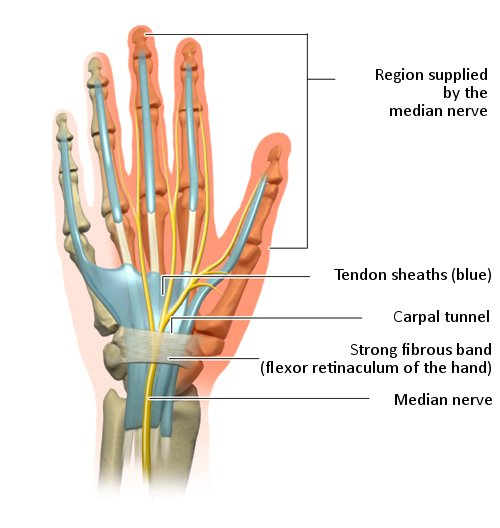Deutsche Gesellschaft für Handchirurgie (DGH), Deutsche Gesellschaft für Neurochirurgie (DGNC). Diagnostik und Therapie des Karpaltunnelsyndroms (S3-Leitlinie). AWMF-Registernr.: 005-003. 2022.
Huisstede BM, van den Brink J, Randsdorp MS et al. Effectiveness of Surgical and Postsurgical Interventions for Carpal Tunnel Syndrome-A Systematic Review. Arch Phys Med Rehabil 2018; 99(8): 1660-1680.
Li Y, Luo W, Wu G et al. Open versus endoscopic carpal tunnel release: a systematic review and meta-analysis of randomized controlled trials. BMC Musculoskelet Disord 2020; 21(1): 272.
Louie D, Earp B, Blazar P. Long-term outcomes of carpal tunnel release: a critical review of the literature. Hand (N Y) 2012; 7(3): 242-246.
Lusa V, Karjalainen TV, Pääkkönen M et al. Surgical versus non-surgical treatment for carpal tunnel syndrome. Cochrane Database Syst Rev 2024; (1): CD001552.
Peters S, Page MJ, Coppieters MW et al. Rehabilitation following carpal tunnel release. Cochrane Database Syst Rev 2016; (2): CD004158.
Shi Q, MacDermid JC. Is surgical intervention more effective than non-surgical treatment for carpal tunnel syndrome? A systematic review. J Orthop Surg Res 2011; 6: 17.
Vasiliadis HS, Georgoulas P, Shrier I et al. Endoscopic release for carpal tunnel syndrome. Cochrane Database Syst Rev 2014; (1): CD008265.
IQWiG health information is written with the aim of helping people understand the advantages and disadvantages of the main treatment options and health care services.
Because IQWiG is a German institute, some of the information provided here is specific to the German health care system. The suitability of any of the described options in an individual case can be determined by talking to a doctor. informedhealth.org can provide support for talks with doctors and other medical professionals, but cannot replace them. We do not offer individual consultations.
Our information is based on the results of good-quality studies. It is written by a team of health care professionals, scientists and editors, and reviewed by external experts. You can find a detailed description of how our health information is produced and updated in our methods.


